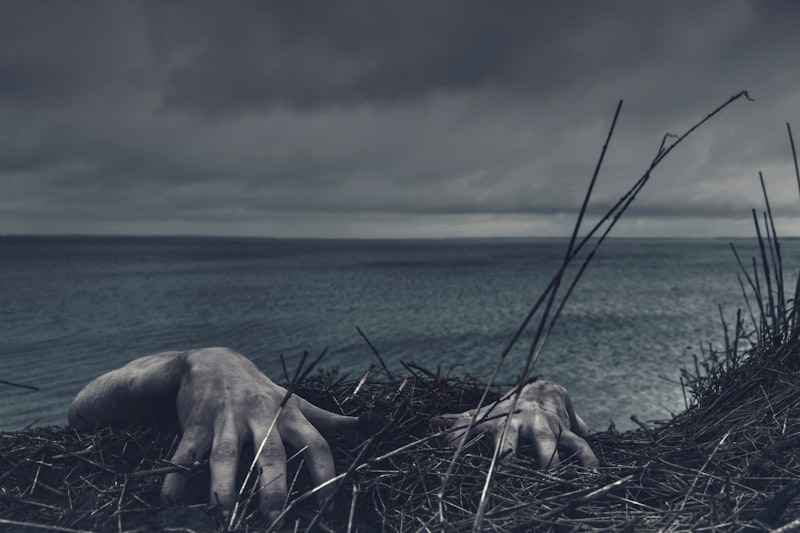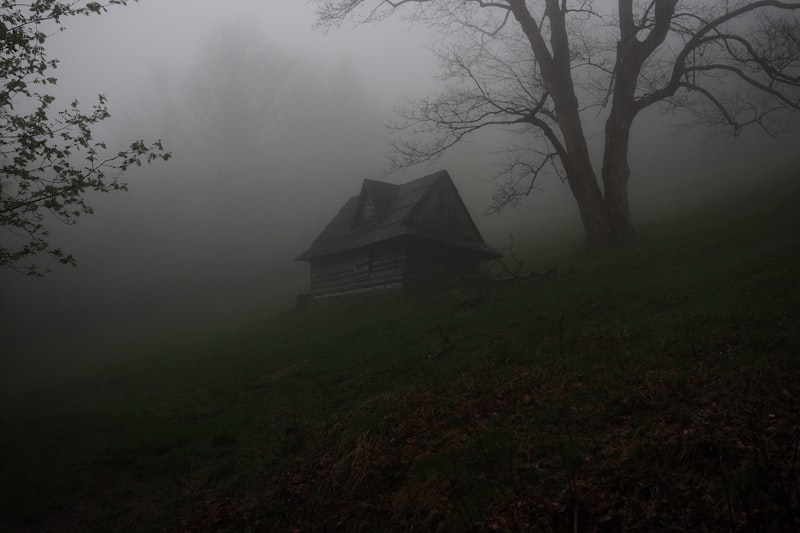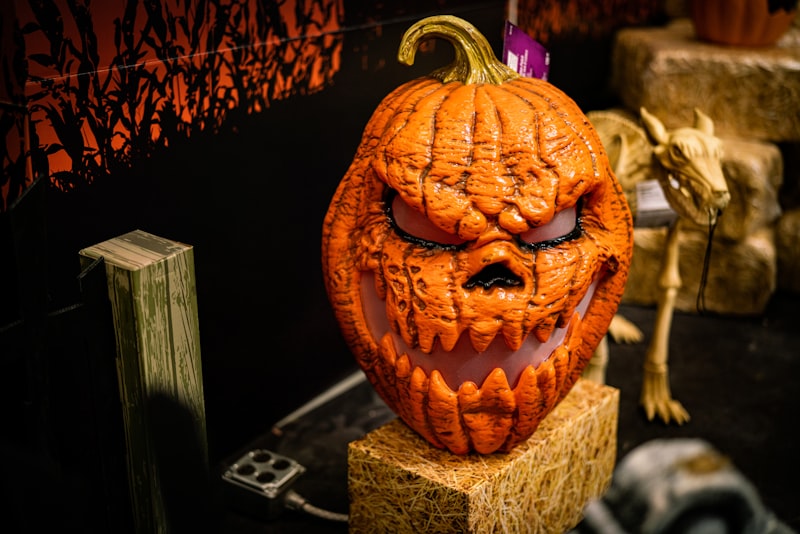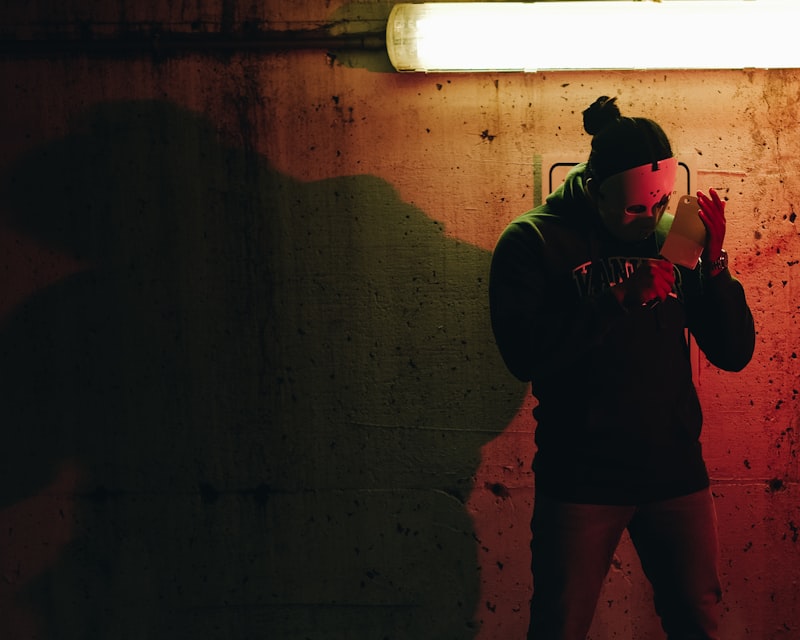
Imagine the bone-chilling legend of the Pontianak from Malaysian folklore, a malevolent spirit of a woman who died in childbirth. With her flowing white gown and piercing red eyes, she haunts the night, seeking vengeance on unsuspecting men. Her eerie cries echo through the jungle, a warning to those who dare to wander alone.
Or delve into the ancient myths of Japan, where the Yurei, ghostly figures of the deceased, roam the earthly realm with unfinished business. Their pale visages and tattered garments evoke a sense of sorrow and longing, forever bound to the world of the living.
Across the ocean, in Ireland, tales of the Banshee strike fear into the hearts of those who hear her mournful wail. This harbinger of death appears as a veiled woman, foretelling imminent doom with her chilling cry that echoes across misty moors and ancient castles.
In the deserts of Egypt, the legend of the Djinn takes shape—a supernatural being of fire and smoke, capable of granting wishes or wreaking havoc. These powerful entities embody both benevolence and malevolence, their unpredictable nature a testament to their otherworldly origins.
From the icy tundras of Scandinavia to the sun-drenched plains of Africa, each culture weaves its own tapestry of horror, where superstition and the unknown collide. These stories, passed down through generations, continue to captivate and terrify, reminding us of the enduring power of folklore to stir our deepest fears and provoke our wildest imaginations.
Chilling Legends: Unraveling the Origins of Ancient Japanese Ghost Stories
Imagine wandering through misty forests where yokai, the spirits of nature, whisper among the trees. Each legend tells of yurei, the restless spirits of the departed, seeking resolution in the world of the living. These stories often stem from deep cultural beliefs, where the boundary between life and death is porous, allowing for spirits to traverse realms.
One such tale is that of Oiwa, whose tragic fate epitomizes the anguish and revenge of the vengeful spirit. Betrayed by her husband, she returns as a spectral figure, her disfigured face haunting those who wronged her. This narrative reflects societal fears and moral lessons, warning against deceit and treachery.
Another spine-chilling story revolves around the onryo, spirits consumed by rage and sorrow, manifesting to exact vengeance on their perpetrators. These tales serve as cautionary tales against moral transgressions and the consequences of unresolved grudges.
From eerie temples cloaked in twilight to mist-covered graveyards echoing with whispers, these ghostly narratives evoke a sense of wonder and unease. They resonate through time, reminding us of the human condition’s complexities and the enduring power of storytelling.
Exploring the origins of these ancient Japanese ghost stories unveils a cultural mosaic where the supernatural intertwines with daily life. As the night falls and shadows lengthen, these tales continue to intrigue, inviting us to delve deeper into the mysteries of the beyond.
In unraveling these chilling legends, we unearth more than mere ghostly apparitions—we discover a profound connection to the past and a testament to the enduring allure of the unknown.
From Banshees to Wendigos: Spine-Tingling Folklore of the Americas
Exploring the rich tapestry of folklore across the Americas unveils a world where myths and legends intertwine with history, creating tales that send shivers down your spine. Imagine the eerie wails of Banshees in Ireland, believed to foretell imminent death. Now, journey across the Atlantic to the Americas where equally chilling legends await, each with its own unique blend of fear and fascination.

One of the most haunting figures in Native American folklore is the Wendigo, a malevolent spirit associated with cannibalism and insatiable greed. Originating from Algonquian-speaking tribes in regions like the Great Lakes and the Atlantic Coast, the Wendigo is often depicted as a skeletal, gaunt figure with glowing eyes, driven by an eternal hunger for human flesh. This legend serves as a cautionary tale against the dangers of excess and the consequences of unchecked desires.
Moving southward, we encounter La Llorona, the Weeping Woman, a spectral figure whose mournful cries are said to herald misfortune. Her story is deeply rooted in Mexican folklore but resonates throughout Latin America. Legend has it that she drowned her children in a fit of madness and now wanders riverbanks, forever searching for her lost offspring. La Llorona embodies themes of maternal love, betrayal, and remorse, evoking both sympathy and terror in those who hear her cries echoing through the night.
Meanwhile, in the Caribbean, the Soucouyant lurks—a shape-shifting hag who sheds her skin at night to become a ball of fire, slipping through keyholes to suck the blood of her victims. This vampire-like creature is feared across the islands, where tales of her nocturnal hunts have kept many awake in dread.
From the mountains of the Andes to the plains of the Midwest, each region of the Americas boasts its own spectral inhabitants and cautionary tales. These stories, passed down through generations, reflect cultural beliefs, societal fears, and the mysteries of the unknown. They remind us that in the darkness of the night, the boundaries between the living and the supernatural are blurred, and the imagination runs wild with stories that chill the soul and ignite the imagination.
European Hauntings: Dark Lore of Castles and Cursed Grounds

Picture yourself standing before the imposing walls of Scotland’s Glamis Castle, where legends swirl as thick as the Highland fog. This centuries-old fortress is rumored to be haunted by the specter of a deformed Earl, hidden away from the world. The chilling aura of its hidden chambers and secret passages has sparked countless ghostly tales passed down through generations.

Venture further south to the brooding mountains of Romania, where Bran Castle looms atop a rocky precipice. Often associated with the legendary figure of Vlad the Impaler, this fortress is steeped in Gothic architecture and dark history. Its looming towers and labyrinthine corridors evoke a sense of ancient dread, making it a magnet for both curious visitors and paranormal enthusiasts alike.
Travel west to Ireland, where the ruins of Leap Castle stand sentinel over the emerald countryside. Known as one of the most haunted places in the world, this castle’s bloody past includes tales of betrayal and brutal violence. The infamous “Bloody Chapel” within its walls is said to be haunted by the spirits of those who met their untimely end in its shadows.
Crossing the channel to France, the Château de Brissac beckons with its opulent façade and tragic tale of love gone awry. Legend has it that the ghost of the “Green Lady,” murdered in a fit of jealousy, still roams its grand halls, forever searching for her lost lover.
These stories of European hauntings weave a tapestry of intrigue and spine-chilling lore, each castle and cursed ground offering a glimpse into the darker side of history. Whether fueled by imagination or rooted in truth, these tales remind us that beneath the beauty of Europe’s architectural wonders lies a world of secrets, waiting to be uncovered by those brave enough to delve into its haunted past.
African Spirits: Terrifying Myths and Legends Across the Continent
Have you ever been intrigued by the chilling tales that echo through Africa’s diverse landscapes? From the dense jungles of Central Africa to the vast deserts of the Sahara, the continent boasts an array of haunting myths and legends that have been passed down through generations.
One of the most spine-chilling myths originates from the deep forests of West Africa. Legend has it that the Tikoloshe, a mischievous and malevolent spirit, roams the night, wreaking havoc on unsuspecting villagers. Described as a small, humanoid figure, the Tikoloshe is said to have the power to curse individuals and cause illness. Villagers often resort to protective rituals to ward off this menacing spirit.
Moving eastward, in the mystical lands of East Africa, the Popobawa lurks in the shadows of Zanzibar. This terrifying entity is believed to take the form of a bat-like creature and is notorious for attacking individuals at night, particularly those who do not believe in its existence. The fear of the Popobawa runs so deep that communities have developed elaborate rituals and charms to fend off its nocturnal assaults.
Across the southern regions of Africa, the Impundulu, or Lightning Bird, strikes fear into the hearts of many. This legendary creature, resembling a large bird or bat, is said to possess the ability to summon thunderstorms and lightning. According to folklore, the Impundulu is often associated with witchcraft and is believed to be a familiar to witches who practice dark magic.
In the expansive savannas of East Africa, the Serengeti, and beyond, the Maasai people speak of Engai, a deity who embodies both benevolent and wrathful qualities. Engai is believed to reside atop the snow-capped Mount Kenya, and rituals are conducted to appease this powerful spirit, ensuring harmony and prosperity for the Maasai people.
These tales of African spirits highlight the rich cultural tapestry of the continent, where beliefs and traditions intertwine with the natural world. Whether you find yourself amidst the lush jungles, arid deserts, or bustling cities of Africa, the spirits and their stories continue to captivate imaginations and remind us of the enduring power of folklore and myth.
Asian Nightmares: Supernatural Entities That Haunt the East
In the realm of supernatural lore, Asia stands out for its rich tapestry of chilling tales and haunting entities that have been passed down through generations. From the misty mountains of Japan to the bustling streets of Thailand, Asian nightmares are steeped in a blend of folklore, spirituality, and superstition that continue to intrigue and terrify.
One of the most infamous entities is the Yurei, a ghostly figure from Japanese folklore that embodies unresolved emotions and tragic endings. These spirits are often depicted as pale, disheveled figures draped in white burial kimono, with long black hair obscuring their faces. They are believed to linger in places where they met a tragic end, seeking closure or vengeance.
Moving south to Southeast Asia, Pontianak holds sway over Malaysian and Indonesian night skies. This female vampiric ghost is said to be the spirit of a woman who died during childbirth, manifesting as a beautiful woman with long hair and a white dress. Her presence is often accompanied by the faint scent of frangipani flowers, signaling impending doom to those who cross her path.
Meanwhile, in the Philippines, the Aswang prowls in the darkness, a shape-shifting creature that preys on the living. It can transform into various forms, from a beautiful woman to a monstrous beast, to deceive and feast upon unsuspecting victims. Legends warn of its preference for unborn fetuses and its ability to blend seamlessly into communities.
These tales not only serve as cautionary tales but also reflect cultural beliefs and societal fears ingrained in Asian communities. They remind us of the power of storytelling to explore the depths of human emotion and the unknown. Whether you believe in these supernatural beings or not, their stories continue to captivate and evoke a sense of eerie fascination that transcends borders and generations.
Grim Folktales of the Middle East: Jinn, Ghuls, and Malevolent Spirits
Imagine a world where unseen beings roam freely, invisible yet powerful. That’s the realm of the Jinn. These entities, crafted from smokeless fire according to Islamic tradition, possess free will and often interact with humans in ways both benevolent and sinister. Legends whisper of Jinn who can shape-shift into animals or humans, granting wishes to the worthy but wreaking havoc on the unwary.
Then there are the Ghuls, gruesome creatures that prowl graveyards and desolate places, feasting on the flesh of the living and the dead alike. These undead horrors embody fear itself, lurking in shadows and preying upon those who venture into their domain. Ghuls are said to be solitary creatures, driven by an insatiable hunger that drives them to seek out the living for sustenance.
Malevolent spirits also haunt these tales, embodying the darker aspects of human nature. From vengeful ghosts to demons summoned by dark rituals, these entities embody the consequences of greed, betrayal, and forbidden knowledge. Their stories serve as cautionary tales, warning against the dangers of delving too deeply into the unknown.
What makes these tales so captivating isn’t just their supernatural elements, but their reflection of the human experience. They explore themes of temptation, morality, and the struggle between good and evil in ways that resonate across cultures and generations. Each story is a window into a world where the boundaries between reality and myth blur, inviting listeners to ponder the mysteries of existence and the unseen forces that shape our lives.
As you delve into the grim folktales of the Middle East, prepare to be enthralled by a journey through darkness and wonder. These stories are more than mere entertainment—they are a testament to the enduring power of storytelling to illuminate the depths of the human soul and the mysteries that lie beyond.
Oceanic Terrors: Haunting Tales from the Islands of the Pacific
Imagine standing on the shores of a remote island, feeling the warm breeze as the sun sets, while locals gather around a crackling fire to share stories of the sea. One such tale whispers of the Kahuna Moana, a mythical sea sorcerer said to wield power over the waves themselves. Legends speak of boats vanishing without a trace, swallowed by colossal whirlpools summoned by the Kahuna Moana’s ancient chants.
Further south, near the coral reefs of Fiji, lurks the Taniwha, a fearsome sea dragon that glides silently beneath the surface, its scales gleaming like emeralds in the sunlight. According to folklore, the Taniwha guards hidden treasures, tempting brave divers who dare to seek fortune amidst its aquatic domain.
Venture westward to the Marquesas Islands, where the Menehune, mischievous spirits of the night, are said to emerge from the depths during moonlit evenings. These elusive beings are known for playing tricks on unsuspecting sailors, causing navigational mishaps that puzzle even the most seasoned captains.
In the heart of Polynesia lies the tale of Te Fiti, the goddess of life and creation, whose wrathful spirit manifests as powerful storms that sweep across the ocean. Locals believe that paying homage to Te Fiti through sacred rituals can appease her restless soul, ensuring safe passage for seafarers who respect her domain.
From the tranquil shores of Tahiti to the volcanic landscapes of Hawaii, each island in the Pacific carries its own collection of spine-tingling stories that celebrate the deep connection between its people and the sea. These narratives serve not only as cautionary tales but also as a testament to the enduring power of oral tradition in preserving cultural heritage.
Prepare to be mesmerized by the rich tapestry of Oceanic Terrors that continue to captivate imaginations and inspire respect for the untamed forces that dwell within the Pacific’s azure depths.
Frequently Asked Questions
How do horror narratives vary across different cultural traditions?
Explore how horror narratives evolve uniquely within diverse cultural contexts, highlighting distinct themes, folklore influences, and fears that shape each tradition’s storytelling.
What are common themes in horror tales from various global regions?
Explore the common themes found in horror tales across different global regions. Discover how cultural beliefs and historical contexts shape these narratives, creating chilling stories that resonate universally.
Why do cultures create and preserve terrifying folklore?
Discover why cultures create and maintain terrifying folklore to explore primal fears, pass down cautionary tales, and reinforce community values through shared narratives.
What are some famous examples of horror stories from diverse cultures?
Explore famous horror stories from diverse cultures, showcasing unique supernatural folklore and chilling tales passed down through generations. Discover eerie narratives like Japan’s ‘Kwaidan,’ India’s ‘Pishacha Vadh,’ and Ireland’s ‘The Banshee,’ each offering a glimpse into the haunting traditions and fears of different societies.
How do cultural beliefs influence the portrayal of supernatural entities in horror stories?
Discover how cultural beliefs shape the depiction of supernatural beings in horror narratives, exploring how diverse cultural perspectives influence the creation and portrayal of these entities in storytelling.


